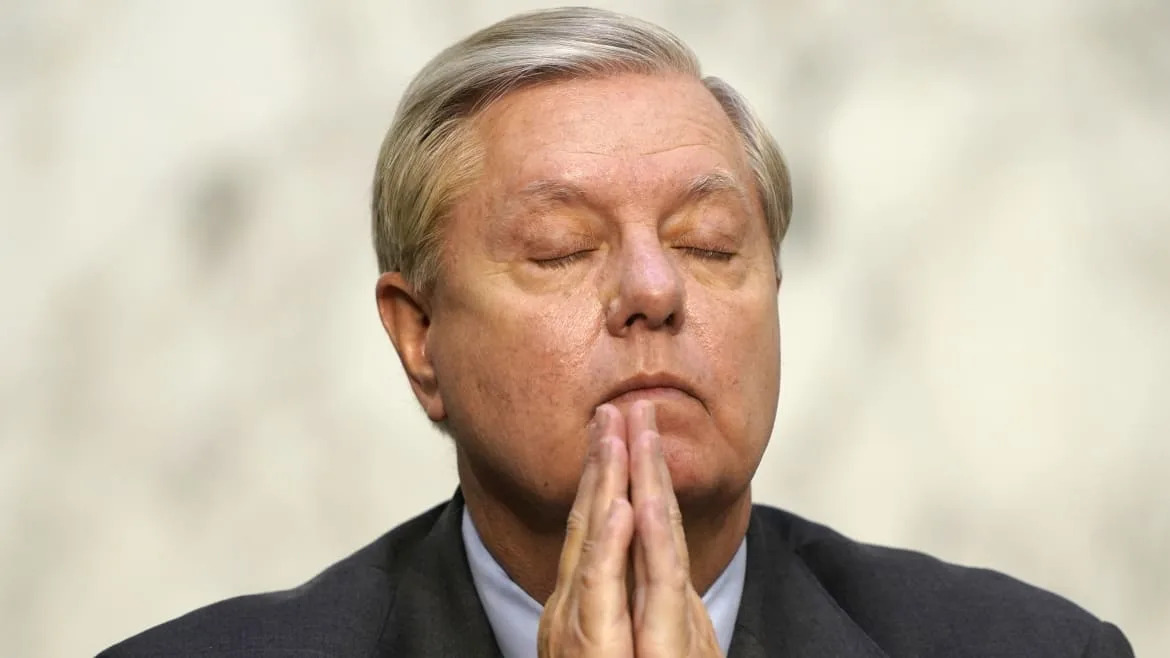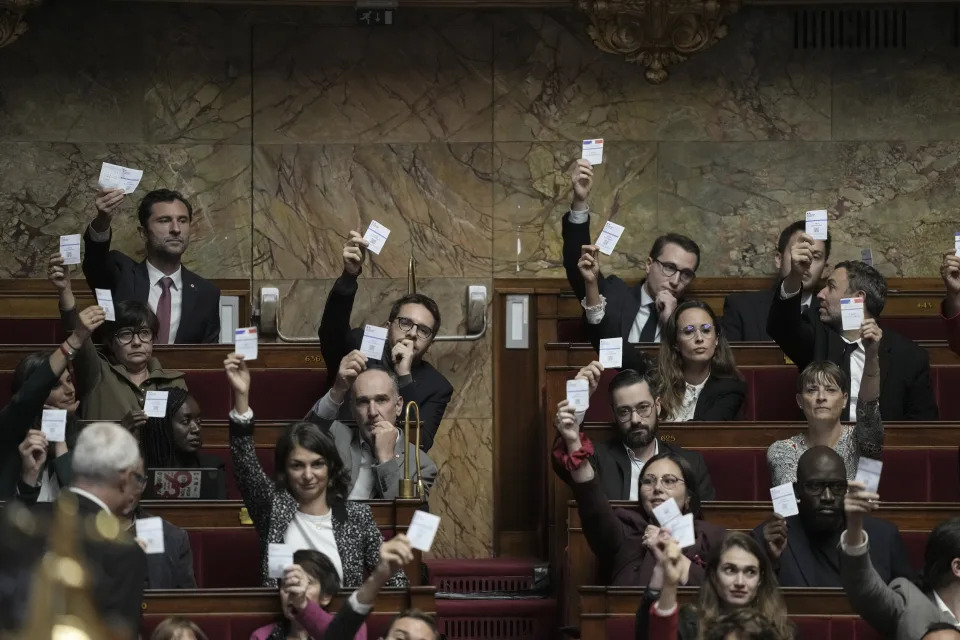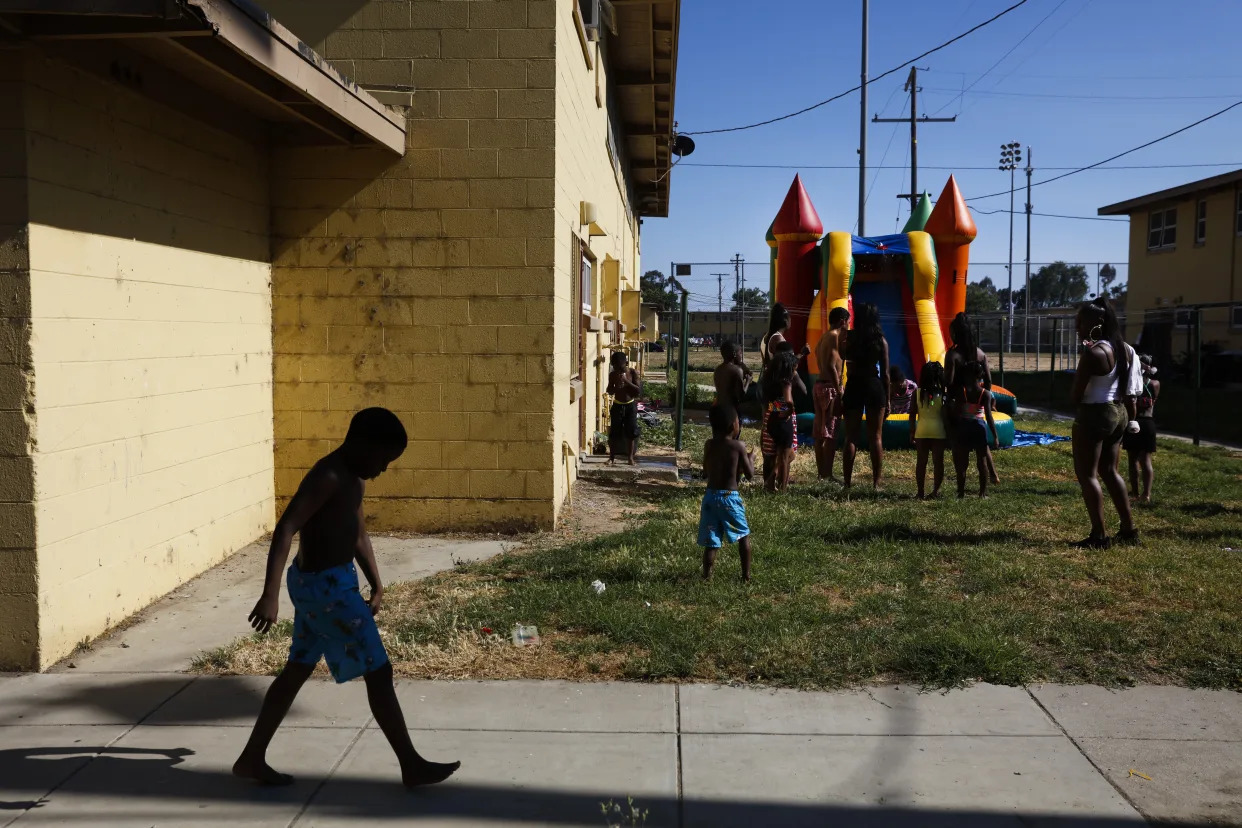LONG LIVE THE GREAT LEADER
David Gardner
Tue, October 8, 2024

Susan Walsh/Getty Images
One of Donald Trump’s closest confidantes has compared the former president’s Mar-a-Lago Florida estate to North Korea, according to an upcoming book by Watergate journalist Bob Woodward.
Senator Lindsey Graham (R-SC) reportedly said: “Going to Mar-a-Lago is a little bit like going to North Korea. Everybody stands up and claps every time Trump comes in.”

Sen. Lindsey Graham (L) says people get to their feet and clap at Mar-a-Lago whenever Donald Trump walks in.
Win McNamee
Graham is quoted as saying that Biden won the 2020 election “fair and square,” but “Trump doesn’t like to hear that.”
A Trump supporter and “golfing buddy”, Graham has tried to give the GOP nominee advice for his 2024 campaign, writes Woodward in his book, War.
“You’ve got a problem with moderate women. The people that think that the earth is flat and we didn’t go to the moon, you’ve got them. Let that go,” he is said to have told Trump after the midterm elections.
CNN has obtained a copy of the book and it quotes Woodward as writing that Graham urged Trump not to dwell on his loss to Joe Biden in the 2020 election, telling him that if he returns to the White House “then January 6 won’t be your obituary.”
Trump allegedly called Graham a few days later to proudly exclaim: “I gave a speech today and I only mentioned the 2020 election twice!”
Woodward also writes about a March meeting between Graham and Saudi Arabia’s Crown Prince Mohammed bin Salman when the South Carolina senator suggested calling Trump.
Woodward claims in his book that bin Salman ordered an aide to bring over a bag containing about 50 burner phones and pulled one out with the label, “TRUMP 45.” Another one was supposedly tagged with the name of Biden’s National Security Adviser Jake Sullivan.
The Trump campaign did not comment specifically on the excerpts about Lindsey Graham, but communications director Steven Cheung said: “None of these made up stories by Bob Woodward are true and are the work of a truly demented and deranged man who suffers from a debilitating case of Trump Derangement Syndrome.”
Cheung added: “President Trump gave him absolutely no access for this trash book that either belongs in the bargain bin of the fiction section of a discount bookstore or used as toilet tissue. “
Daily Beast.
David Gardner
Tue, October 8, 2024

Susan Walsh/Getty Images
One of Donald Trump’s closest confidantes has compared the former president’s Mar-a-Lago Florida estate to North Korea, according to an upcoming book by Watergate journalist Bob Woodward.
Senator Lindsey Graham (R-SC) reportedly said: “Going to Mar-a-Lago is a little bit like going to North Korea. Everybody stands up and claps every time Trump comes in.”

Sen. Lindsey Graham (L) says people get to their feet and clap at Mar-a-Lago whenever Donald Trump walks in.
Win McNamee
Graham is quoted as saying that Biden won the 2020 election “fair and square,” but “Trump doesn’t like to hear that.”
A Trump supporter and “golfing buddy”, Graham has tried to give the GOP nominee advice for his 2024 campaign, writes Woodward in his book, War.
“You’ve got a problem with moderate women. The people that think that the earth is flat and we didn’t go to the moon, you’ve got them. Let that go,” he is said to have told Trump after the midterm elections.
CNN has obtained a copy of the book and it quotes Woodward as writing that Graham urged Trump not to dwell on his loss to Joe Biden in the 2020 election, telling him that if he returns to the White House “then January 6 won’t be your obituary.”
Trump allegedly called Graham a few days later to proudly exclaim: “I gave a speech today and I only mentioned the 2020 election twice!”
Woodward also writes about a March meeting between Graham and Saudi Arabia’s Crown Prince Mohammed bin Salman when the South Carolina senator suggested calling Trump.
Woodward claims in his book that bin Salman ordered an aide to bring over a bag containing about 50 burner phones and pulled one out with the label, “TRUMP 45.” Another one was supposedly tagged with the name of Biden’s National Security Adviser Jake Sullivan.
The Trump campaign did not comment specifically on the excerpts about Lindsey Graham, but communications director Steven Cheung said: “None of these made up stories by Bob Woodward are true and are the work of a truly demented and deranged man who suffers from a debilitating case of Trump Derangement Syndrome.”
Cheung added: “President Trump gave him absolutely no access for this trash book that either belongs in the bargain bin of the fiction section of a discount bookstore or used as toilet tissue. “
Daily Beast.







 Donald Trump's economic policies would destroy economic growth, according to an expert analysis. (Peterson Institute for International Economics)
Donald Trump's economic policies would destroy economic growth, according to an expert analysis. (Peterson Institute for International Economics)





